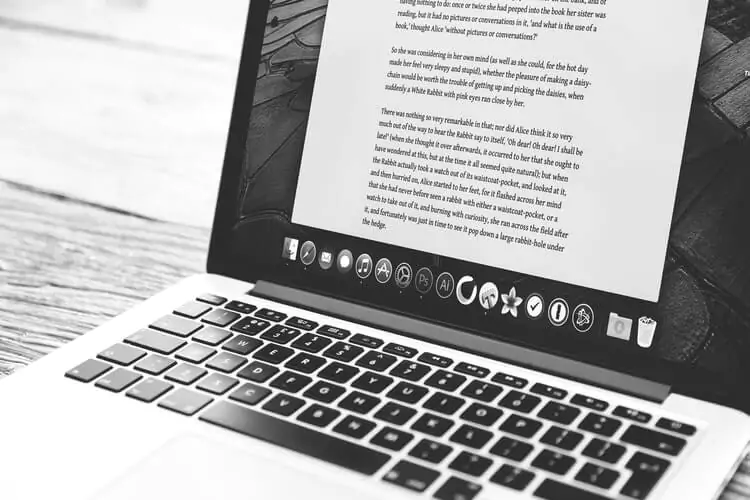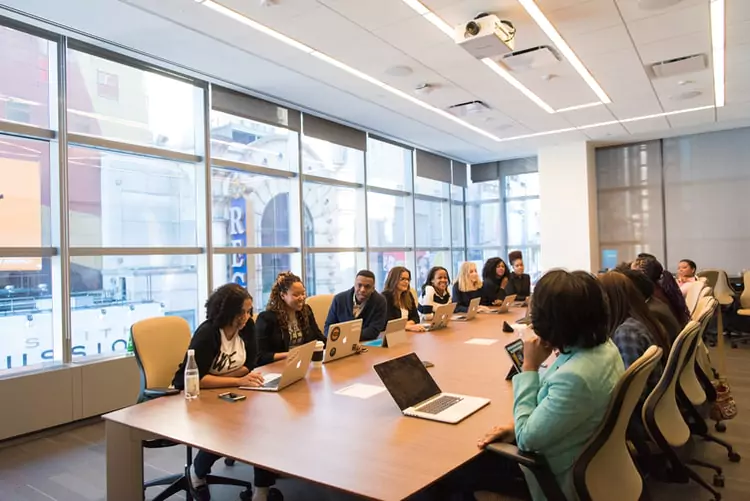Originally published November 27, 2020 , updated on September 5, 2024
There is a lot of talk about the B2B marketing funnel. Who owns it? Marketing or Sales? Is the funnel even still relevant to modern buying processes?
The answer to those questions, in no particular order, are: yes, and both.
Today we’ll be discussing the B2B marketing funnel, diving into some of the recent changes and the rising challenges for marketers. We’ll compare the uses of the funnel for B2C and B2B cases, and break down the marketing vs. sales ownership debate. We’ll also explore some nonlinear approaches to the funnel, and explore how it can be flipped to create more leads.
Before we get into that, let’s recap what we know about the B2B marketing funnel.
WHAT IS THE B2B MARKETING FUNNEL?
In a nutshell, any marketing funnel is just a visualisation designed to help understand the process of converting leads into customers. The idea is simple: marketers bring in as many leads as possible, nurturing them through the decision-making process and whittling down the amount of leads in each stage of the funnel.
In a perfect world, the funnel would actually be a cylinder. Anybody who shows interest in your business would eventually become a customer. Unfortunately, that’s not the reality of today’s business world. Thus, it becomes part of a marketers job to convert as many leads as possible. The more cylindrical the funnel, the better.
Another important thing to note is that there is no universal funnel. The funnel varies, and can look very different between industries, and even between businesses. Some have many stages, others have only a few, and most of them will have different names for the stages, with different actions that need to be taken by both the consumer and the business for each.
Below is an amalgamation of the most relevant and common B2B marketing funnel stages, actions and terms.
B2B MARKETING FUNNEL STAGES
Let’s go through each of the funnel stages, just to recap how they work and what they mean.
Awareness
Awareness is the first stage of any marketing funnel. Consumer research and discovery, as well as marketing campaigns, will draw potential customers into the funnel by making them aware of your brand. This is where lead generation takes place.
Through social media, PPC, media mentions, content marketing, webinars and other marketing, trust and thought-leadership are established. These efforts often result in information collection through forms and landing pages, and during this phase, all leads are pulled into the CRM system. From here, they can be nurtured, and hopefully moved further down the funnel.
Interest
Once a lead has been generated, the move from awareness to interest. During this stage, they learn more about the company, as well as the products or services. This provides an opportunity for brands to establish a relationship with their leads.
During this stage, marketers can nurture leads with email sequences and targeted, informative content – allowing them to position themselves.
Consideration
Once a lead moves into the consideration stage, they become marketing qualified. At this point in the funnel, they become prospective customers, rather than just leads. To move them further down the funnel, marketers can send them more information about offers through email sequences, and continue to nurture them with targeted content. This can include case studies, white papers, free trials and more.
Intent in B2B Marketing Funnel
A prospect will enter the intent stage of the funnel when they have demonstrated that they are interested in purchasing a product or service. Intent can be demonstrated in several ways, including adding an item to their shopping cart, asking certain questions to customer service, or signing up for a trial or demo.
During this stage, marketers should be making their case as to why their product or service is the better choice for the buyer.
Evaluation
During the evaluation stage, prospects will be making their final decision about whether or not to make a purchase. During this phase, sales and marketing will have to work together closely in order to nurture this process, convincing the buyer that their brand’s offering is the best choice.
Purchase
The final stage of the funnel. At this point, the prospect has made the decision to buy, and is “closed won” – they become a customer. At this point, sales is taking care of all customer communication.
By ensuring the customer has a positive experience, you can gain referrals which further fuel the marketing funnel. These new leads will enter the top of the funnel, and the process can begin again.
HOW DOES THE B2B MARKETING FUNNEL DIFFER FROM THE B2C MARKETING FUNNEL
Below is another amalgamated diagram, this time modified to reflect some of the differences between B2B marketing funnels and their B2C counterparts. The funnel below outlines some of the actions a prospective lead could take within each stage of the funnel.
Some of the key differences between the types of funnels include:
- B2C customers will usually go through the funnel alone. They may have a few trusted advisors, such as family or friends guiding them. Conversely, B2B buyers will often have a much larger buying group (averaging 5.4 people), usually including multiple departments.
- B2B customers are more likely to interact with a company representative than their B2C counterparts.
NONLINEAR FUNNELS
One of the first questions we mentioned when we started this blog is whether or not marketing funnels are even relevant anymore. The buying process isn’t as linear as it used to be, and not every lead joins the funnel at the same stage. Sometimes, a referral is so convincing that the prospect jumps right to intent. Through their research, they could come in at consideration.
With the internet being what it is, users have access to almost limitless information. This means that they’re doing a lot of their own research, and they depend on content such as blog posts, infographics, case studies and whitepapers to tell them what they need to know about a brand’s products or services. According to CEB, B2B customers get through a whopping 57% of the funnel on their own, before ever engaging with a company representative.
Alternatives to the traditional B2B marketing funnel include McKinsey’s “consumer decision journey”. This model is circular, and demonstrates how the process actually fuels itself.
Not everyone agrees on this approach, though. According to Mark Bonchek and Cara France in their Harvard Business Review article, “Brands may put the decision at the center of the journey, but customers don’t.”
With no universally agreed upon model, both the funnel and the decision journey continue to be useful, and used.
MARKETING VS. SALES: WHO OWNS THE B2B MARKETING FUNNEL
A tale as old as time – marketing vs. sales.
Among the other things sales and marketing teams love to fight about, they also argue over who owns the funnel. On the one hand, consumers have begun to rely on content such as blog posts and case studies to help them make purchasing decisions. Surely this means that marketers should be responsible for the funnel. Afterall, it’s their content which nurtures prospects through the various stages. Below is a diagram which highlights how ownership of the funnel has changed in recent times.
Some seem to think that the funnel should be split down the middle, belonging fully to both marketing and sales. The argument for this is that salespeople are “increasingly becoming thought leaders to drive awareness by doing outbound outreach.”
If this is the case, then it is the responsibility of both sales and marketing to nurture prospects through the funnel, each having an equal hand in getting leads from awareness to purchase.
THE B2B MARKETING FUNNEL AND THE CUSTOMER EXPERIENCE
Flipping the funnel – turning into a customer experience funnel – is becoming increasingly common. Rather than focussing on turning leads into customers, the experience funnel focuses on turning customers into advocates. This way, the experience funnels fuels the marketing funnel, by driving referrals.
Below is a diagram from Track Maven of what the customer experience funnel could look like:
THE CUSTOMER EXPERIENCE FUNNEL
Repeat
The first step after a customer has made a purchase is to encourage them to make another. To do so requires implementing effective retention and nurturing strategies to nudge customers into making more purchases. Marketers should continue their bottom-of-the-funnel activities to encourage repeat purchases.
Loyalty
The loyalty stage is the phase of the customer experience in which consumers develop a preference for a particular brand. At this point, engagement is key. At this point, consumers will begin to identify with a brand, and possibly personalise products. Through community development and outreach, marketers can help to nurture this connection.
Referral
Once a customer is loyal to a brand, they are more likely to provide business referrals and recommend brand products.
Advocacy
Turning your customers into advocates is the ultimate evolution for nurturing current customers. Evangelism in the form of writing product reviews, posting about products on social media, and more can help drive more new leads for your marketing funnel. Having an external recommendation not connected to a brand can strongly influence prospects. Marketers can work to develop their communities to better support advocates, ask them to participate in case studies, or engage them around consumer-generated content on social media.
FINAL THOUGHTS
The ultimate goals are to increase the number and size of purchases and to drive more awareness and referrals to fuel the B2B marketing funnel.
Post Views: 2169


















